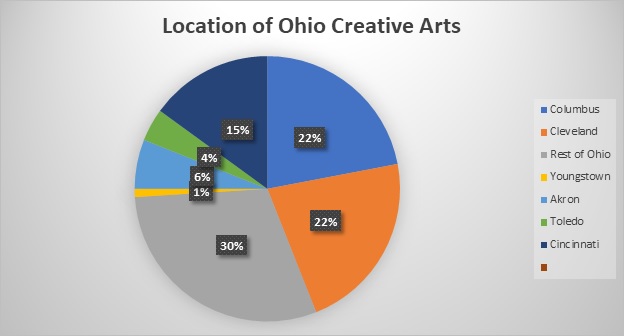As the COVID-19 outbreak began to take shape in Ohio and around the country, one of the earliest business to be impacted was Ohio’s arts and entertainment industry, including theaters both large and small, museums, galleries, and other entertainment facilities.
After five months of closure, the Ohio Department of Health (ODH) recently released new guidance allowing for the gradual reopening of arts entertainment facilities including theaters. The issued guidance provided new guidelines including limiting attendance in a theater to the lesser of the two; 15% of the facilities capacity or a max of 300 individuals. The new guidance from ODH is a good first step in re-opening these businesses, but many still face substantial barriers.
COVID-19 has reshaped many industries not only in Ohio, but throughout the country, but very few are facing the same challenges moving forward as that of the arts and entertainment. Like many other businesses COVID-19 has turned the operating model up-side-down. Particularly, Ohio’s large theater operators, who run some of the largest historical theaters in the state are facing the prospect of remaining closed or with very limited operations throughout the remainder of 2020 and likely into 2021. This comes on the backside of already being closed without any revenue generation for the past five months. With one of the highest unemployment rates of 47% Ohio’s arts and entertainment industry is facing a crisis.

Arts and Cultural institutions are found all throughout the state of Ohio and play a key role in a cities, region, or states economic vitality. According the Bowling Green State University Center for Regional Development, in Ohio alone the creative industries including businesses ranging from nonprofit museums, symphonies, and theaters employ nearly 300,000 Ohioans, accounting for more than $41 billion to the state’s economy, and generates nearly $4.5 billion in federal, state, and local taxes.
As summer turns to fall and the COVID-19 outbreak continues, Ohio’s arts and cultural institutions need support more than ever. Without clear indications that these businesses will be able to operate at near-full or full capacity, leaders both at the state and philanthropic levels should assess what can be done to protect this economically vital industry in the state. What is clear is that without additional supports many of these organizations will continue to struggle with the real prospect that many of them may not be able to turn on their lights or open their doors in the future.